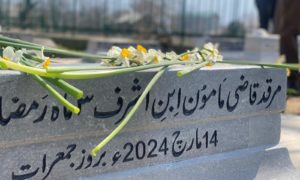Urban dictionary defines “sampling” as “the process of taking a brief segment of sound and using that sound to form another sound or musical piece.”
In hip-hop sampling began in 1981 when Sugar Hill Gang released their debut single “Rapper’s Delight,” which became the first rap song to find a spot on a commercial chart. Cemented in the culture of hip-hop, it is often credited for pushing rap music into the mainstream and, while, that remains an important aspect of the song’s legacy, it is also the first hip-hop song to sample a previously released song, Chic’s “Good Times.”
Eventually, it set off a cycle of sampling and re-sampling, making the process of sampling a staple in the culture of hip-hop; the song itself has been sampled numerous times, especially in the nineties, in songs such as Notorious B.I.G’s “Intro” and Ice Cube’s “You Can Do It.”
While a lot of controversy has surrounded the art of sampling ever since its inception, it has, however, had an enormous impact on music, especially on hip-hop and rap music, wherein its importance is both cultural and artistic.
For one, through sampling, hip-hop producers pay homage to the artists and the eras which preceded them; one such example is Kendrick Lamar’s “King Kunta,” from his third studio album To Pimp a Butterfly, which pays homage to the 70s Funk movement in America, by sampling James Brown’s “The Payback.”
Secondly, the producers have also used sampling as a means to push the genre forward in terms of creativity.
J Dilla used as many as seventy-five samples on his final album Donuts, using techniques such as looping, digital effects, repetition, chopping etc. unique to him, making his work groundbreaking as a prolific producer.
In a similar vein, rapper-duo Straight Outta Srinagar and producer Prxphecy are defining the sound of Kashmir’s hip-hop landscape.

Across its five-minute runtime and three beat-switches, Czawul samples “Behaa Yaar Lagai,” “Bail Wanty Bal Yaras” and “Bo Paerai Khan” by renowned Kashmiri folk and Sufi singer Abdul Rashid Hafiz.
For the first time after MC Kash went on a hiatus, there is sense in Kashmir’s rap scene, that is true to the roots of the valley. These artists are not only making hip-hop music, but, more importantly, they are putting a spin on and making it their own.
The song starts off with a heavily manipulated sample of “Behaa Yaar Lagai,” backed with a thick bass-line and a dense hi-hat pattern.
On the lyrical end, Aatankki and Tufail rap about being at the top of their game, flaunting their rhymes (“python/pylon”) and their ability to have the ‘coolest’ references (“Ab bole DAMN Lamar ka main jaise ELEMENT”) and double-entendres (“Gaane challenger aur deep ladke naap mat ghehrai”).
The lines “SOS na gobra lakut masle / badyan rapper’an waalan misli / panyan kaeshryan hinz ha kathi ni” proved to be controversial among Kashmir’s rap audience and artists alike, as many thought it showed the rappers in very downgraded light.
But with their immense talent and a solid skillset, SOS can back the claim of being the best out. In reaction to these lines, however, 1Shot released “Pujj” and Shaddy X released “Admonition,” two diss tracks aimed at SOS.
The mediocrity and often cringe bars of these tracks are reason enough as to why Kashmir doesn’t need or have space for a ‘diss’ culture at all.
For an effortlessly switch into the second beat, the sample of “Bail Wanty Bal Yaras” is way more immediate and expressive. In a way, reminiscent of MF Doom’s aptly title “Accordion.” It works in perfect harmony with the thick and protruding bass, one complimenting another. It’s a musical demonstration of an artist, case in point the producer of the song, Prxphecy, who not only flips the sample but makes its cohesive and accessible to the contemporary demographic of rap listeners.
While both Tufail and Aatankki, more or less, rap about the same, there are a lot of stand-out punchlines, such as, “Do ladke lay kranti Srinagar hip-hop mein.” It really does feel like the onset of a revolution, both in terms of quality and sound.
It also features a section where Tufail hits his signature chopper flow and it doesn’t seem to work here, probably because it doesn’t go well with the tempo of the song overall. For the final transition in the song, Prxphecy samples “Bo Paerai Khan” and leaves it almost untouched.
More than a sound in the mix, it sounds like a fusion of rap and folk. The intermittent snares and a triumphant sound leave a perfect backdrop for SOS to rap one clever line after another, for both, obvious and not-so-obvious reasons: “Ye rapper slow sab jaise yahan ka internet / main power mein BJP karun inhe ban” or “Gassi cxith agar maan karith czanji dikh cze dekas / yiha gov Papa-two baran manz qaed naam tulaan nethas.”
Czawul is a bar-fest, from the cold punchlines to the clever incorporation of references, there is an affluence of it all.
Aatankki and Tufail have a chemistry that’s both infectious and unmatched, and their performances on Czawul have only gotten better with time. But even then, Prxpehcy, the man behind the production of the song is a clear star of the show, and not merely based on the merit of creating the beat such as this but its importance as well.
As Tufail raps in the song, “Bobby beat nahi dega tu pehle bejh paise.” There is no reason that that shouldn’t be the case.
Not only does the song pay homage to Abdul Rashid Hafiz, a folk legend that Kashmir often tend to undermine, but it also impels the sonic vision of hip-hop in Kashmir.
Free Press Kashmir is now on Telegram. Click here to Join.
FPK Android App for 2G. Click here to Download.







